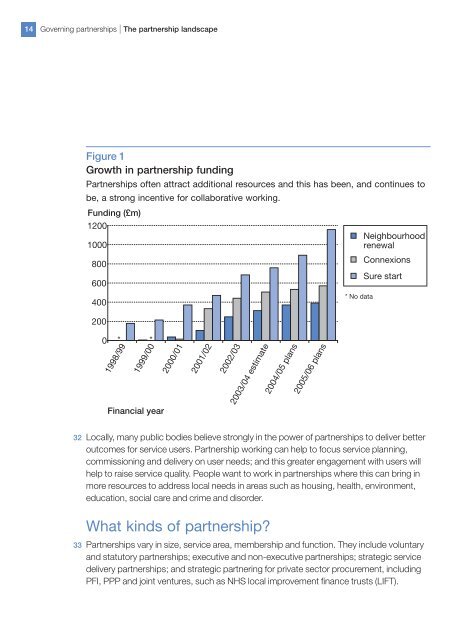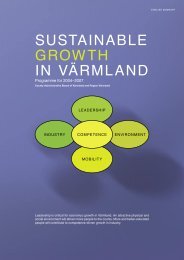Bridging the accountability gap - Audit Commission
Bridging the accountability gap - Audit Commission
Bridging the accountability gap - Audit Commission
Create successful ePaper yourself
Turn your PDF publications into a flip-book with our unique Google optimized e-Paper software.
14<br />
Governing partnerships | The partnership landscape<br />
Figure 1<br />
Growth in partnership funding<br />
Partnerships often attract additional resources and this has been, and continues to<br />
be, a strong incentive for collaborative working.<br />
Funding (£m)<br />
1200<br />
1000<br />
800<br />
600<br />
400<br />
200<br />
* No data<br />
Neighbourhood<br />
renewal<br />
Connexions<br />
Sure start<br />
0<br />
* *<br />
1998/99<br />
1999/00<br />
Financial year<br />
2000/01<br />
2001/02<br />
2002/03<br />
2003/04 estimate<br />
2004/05 plans<br />
2005/06 plans<br />
32 Locally, many public bodies believe strongly in <strong>the</strong> power of partnerships to deliver better<br />
outcomes for service users. Partnership working can help to focus service planning,<br />
commissioning and delivery on user needs; and this greater engagement with users will<br />
help to raise service quality. People want to work in partnerships where this can bring in<br />
more resources to address local needs in areas such as housing, health, environment,<br />
education, social care and crime and disorder.<br />
What kinds of partnership<br />
33 Partnerships vary in size, service area, membership and function. They include voluntary<br />
and statutory partnerships; executive and non-executive partnerships; strategic service<br />
delivery partnerships; and strategic partnering for private sector procurement, including<br />
PFI, PPP and joint ventures, such as NHS local improvement finance trusts (LIFT).








